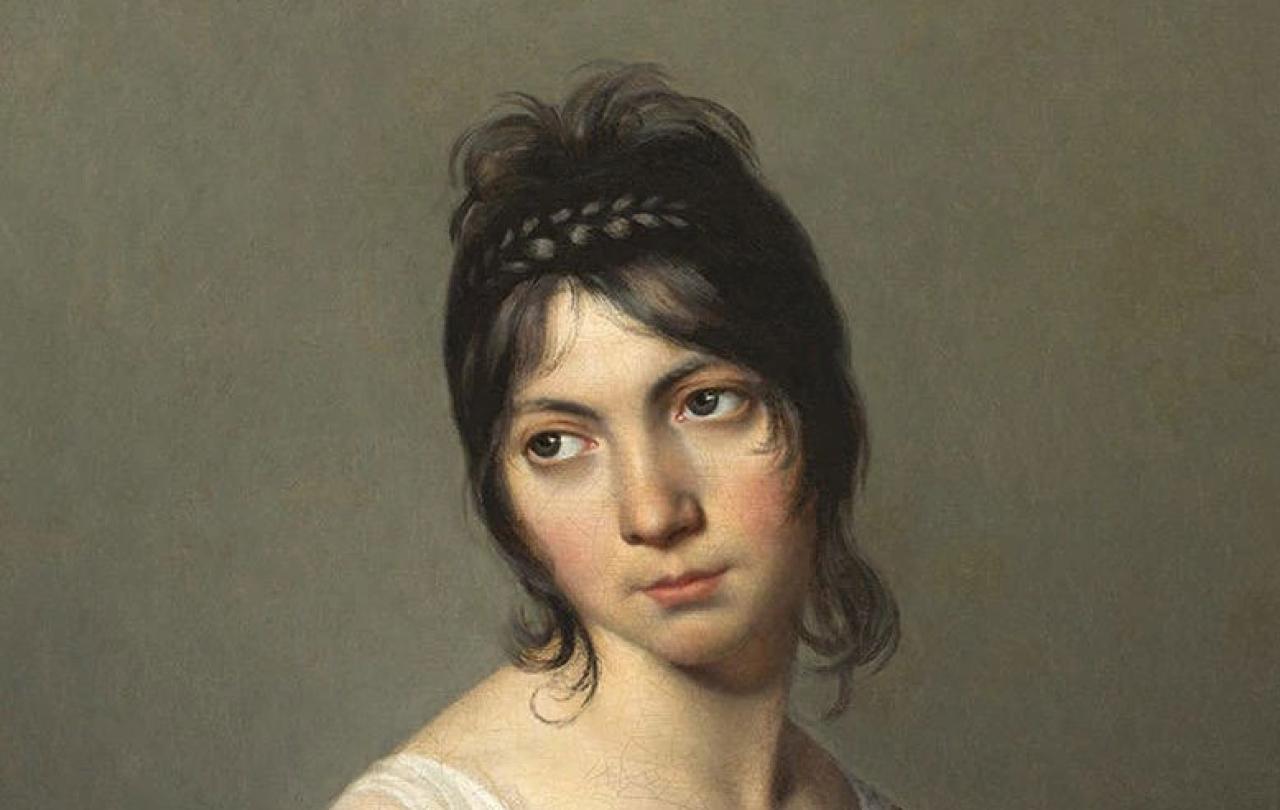
‘I’m tall, fat, rather bald, red-faced, double-chinned, black-haired, have a deep voice, and wear glasses for reading’. That is how C.S. Lewis described himself to a class of Fifth Grade pupils in Maryland who wrote to him in May 1954. An exhibition this summer at Magdalen College, Oxford, entitled C.S. Lewis: Words and Worlds, includes this letter along with a variety of personal objects, letters, books, manuscripts and audio materials relating to one of its most famous fellows.
As well as answering questions about plot details and forthcoming books in the series, Lewis corrects their view that everything in the Narnia books represents something in our own world. As he notes, that is indeed how Bunyan’s Pilgrim’s Progress works – a reference which may have been lost on his ten-year-old correspondents – but that’s not what Lewis intended in the Narnia stories. Instead, Lewis explains that he set out to write a ‘supposal’ rather than an allegory. He began by asking himself the question: ‘Suppose there were a land like Narnia and that the Son of God, as He became a Man in our world, became a Lion there, what would happen?’
For Lewis, the great value of stories is the way they allow their readers to experience ideas rather than simply think about them. In an essay called ‘Myth Became Fact’ he notes the impossibility of feeling an emotion such as pleasure and simultaneously studying it. But if you aren’t roaring with laughter, how can you genuinely understand humour? If you are suffering from toothache, you will be unable to write. But once the toothache has subsided, how could you write a book about pain? Lewis explains this paradox using the myth of Orpheus and Eurydice. Orpheus was permitted to lead his beloved wife out of the underworld, but the moment he looks back at her, she disappears. We can draw an abstract truth from this story about the impossibility of simultaneously seeing and experiencing, but it is not the only truth that this myth can communicate. If it were, it would be an allegory.
Instead of presenting the reader with a single message needing to be unlocked, myths instil a sense of longing for something much less tangible
As such, an allegory is like a puzzle that must be solved by the reader to reveal its hidden meaning. Its one-dimensional characters straightforwardly signal the qualities they represent, as in Bunyan’s Mr Despondency, held captive in Doubting Castle by a giant called Despair. Unlike allegory, myths are stories from which numerous truths may be abstracted. Instead of presenting the reader with a single message needing to be unlocked, myths instil a sense of longing for something much less tangible – ‘like a flower whose smell reminds you of something you can’t quite place’. Lewis considered allegory to be a limited medium, since authors can only insert ideas that they already know, whereas a myth is of a higher order, since authors can fill it with ideas of which they are not yet conscious.
Lewis was fascinated by myths from his first encounter with the stories of Asgard and the Norse deities as a young man. As an atheist, one of his key objections to the Christian faith was that it was just another version of the myth of a dying god who is resurrected, similar to those he found in the stories of the Norse god Baldr, whose death was brought about by Loki, the trickster god. Following entreaties by Baldr’s mother, the goddess Frigg, Hel agrees to release him from the underworld, on the condition that everything on earth weeps for him. But Baldr’s return is ultimately blocked by one creature, a giantess, presumed to be Loki in disguise, who refuses to mourn him.
Why was Christianity different to this myth, or others, like the Egyptian account of Osiris or the Classical story of Adonis? It was a lengthy night-time conversation with his friends Hugo Dyson and J.R.R. Tolkien in the grounds of Magdalen College in September 1931 that helped him overcome this objection and embrace Christianity. What Lewis came to recognise is that, when he encountered a god dying and being revived in pagan myths, he found it profoundly moving, suggestive of meanings beyond his grasp. But, when he met a similar concept in the Christian gospels, he was unmoved. What he took from his talk with Tolkien and Dyson was an openness to accepting the Christian story as a myth, with all its mystery and suggestive implications, but with one key difference from the Norse, Egyptian and Classical myths: it really happened. But, by becoming fact, he argued, Christianity did not cease to be a myth: ‘that is the miracle’.
Lewis wrote the Narnia stories to help children like Eustace become open to the possibility of a reality beyond the strictly material world.
In writing the Narnia stories Lewis was engaged in what he and Tolkien called ‘mythopoeia’ – the act of myth-making – communicating Christian truths in ways that would inspire children to grasp something of its mystical and mythical qualities. As he noted in his essay ‘On Stories’, reading about enchanted woods does not make children despise real woods, but instead makes all real woods a little bit enchanted. In The Voyage of the Dawn Treader, the children meet Ramandu, a retired star who is being restored to his former youth so that he can rejoin the great dance in the sky. ‘In our world’, says Eustace Scrubb, ‘a star is a huge ball of flaming gas’. ‘Even in your world, my son, that is not what a star is but only what it is made of’, Ramandu retorts. Eustace, we are told at the beginning of the story, had wasted his time at school reading only books of information about exports and imports, so it is no surprise that he can only comprehend a purely materialist definition. If he’d only read more fairy stories, he might have been able to grasp this reality, as well as being better prepared for his adventure on Dragon Island.
Lewis wrote the Narnia stories to help children like Eustace become open to the possibility of a reality beyond the strictly material world. Since God himself is mythopoeic – after all, isn’t the sky itself a myth? – shouldn’t we therefore be mythopathic, that is, receptive to myths? For Lewis, Christianity offered the marriage of Perfect Myth and Perfect Fact, which should be met not solely by love and obedience, but also by wonder and delight.
Simon Horobin is Professor of English Language & Literature, Magdalen College, Oxford University. He is the author of C.S. Lewis’s Oxford (Bodleian Publishing, 2024) and co-curator of C.S. Lewis: Words and Worlds. The exhibition runs until 11 September 20024, in the Old Library of Magdalen College, Oxford. Check opening times.

